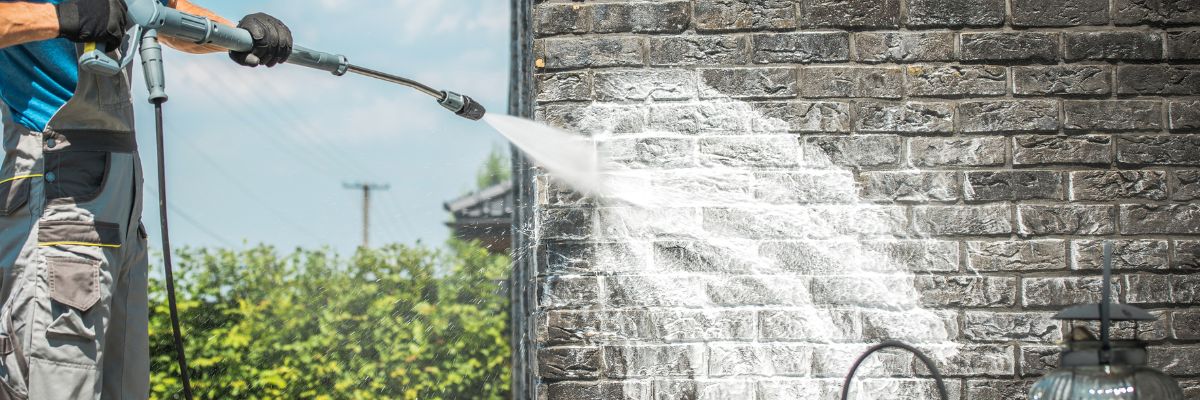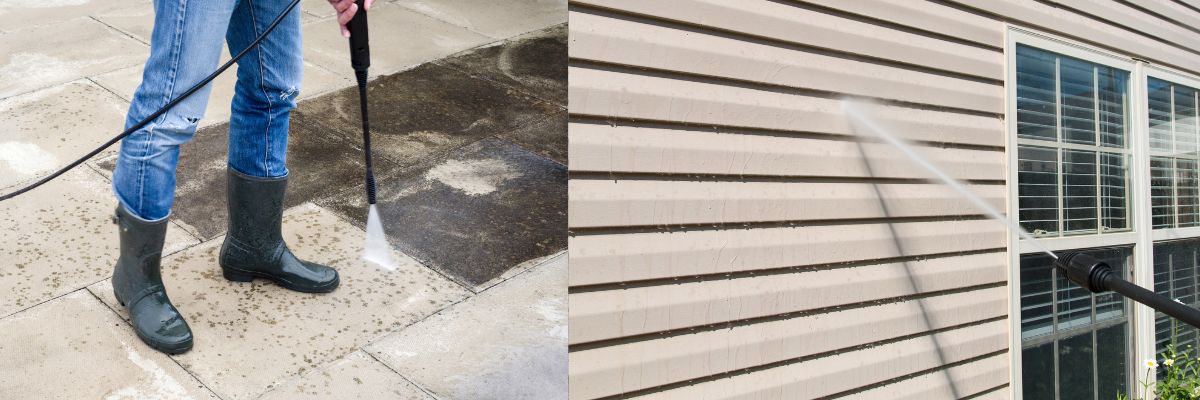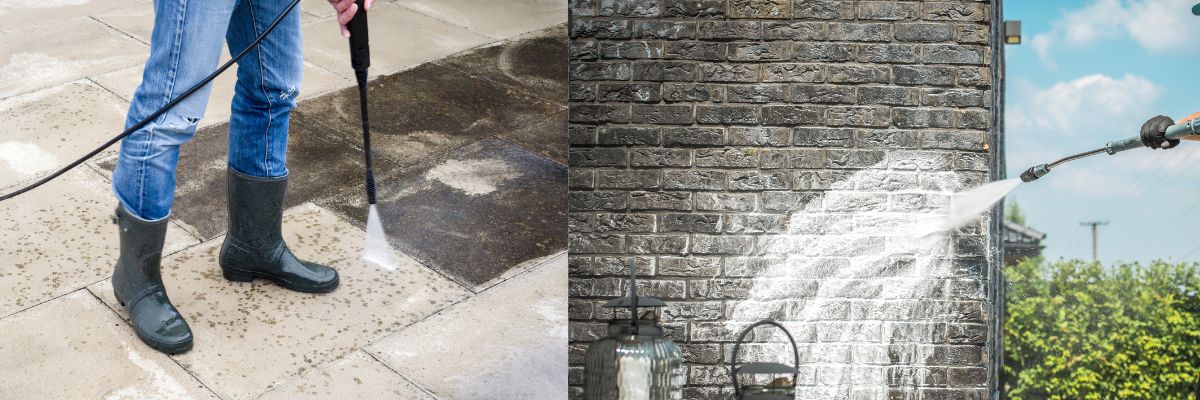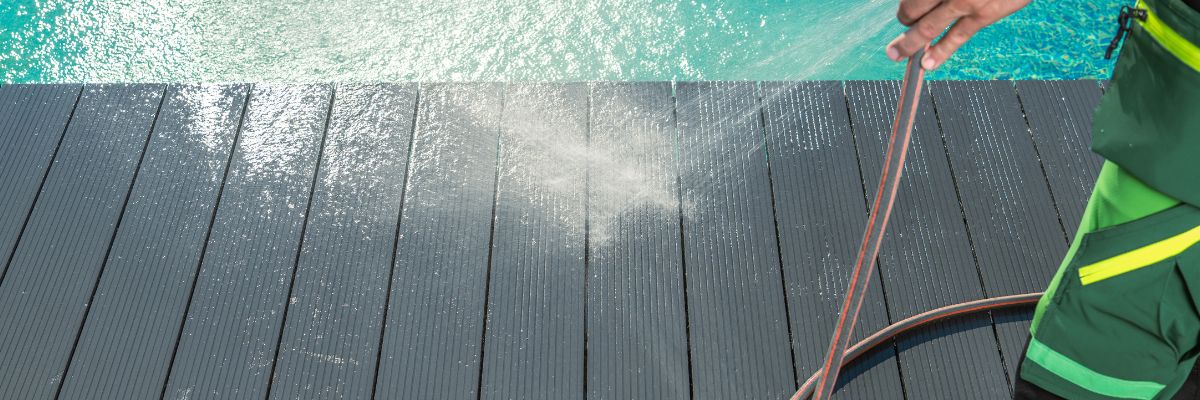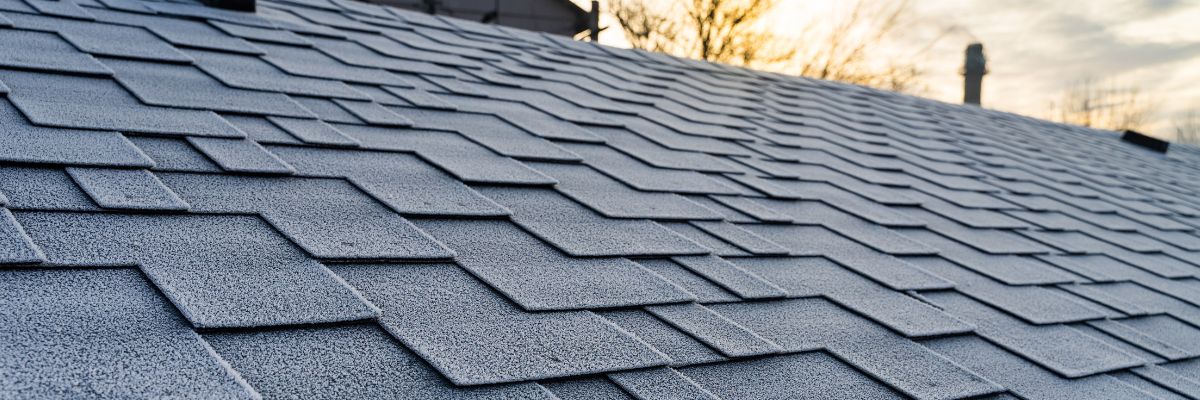The main difference between pressure washing and power washing lies in the temperature of the water used. While both methods use high-pressure water to clean surfaces, power washing uses heated water—which is more effective at breaking down grease, oil, and stubborn grime—whereas pressure washing uses unheated or cold water, making it better suited for general cleaning tasks on surfaces that can’t handle heat.
Core Differences Between Power Washing and Pressure Washing
| Feature | Pressure Washing | Power Washing |
| Water Temperature | Cold or unheated tap water | Heated water (up to 185°F–311°F) |
| Pressure Range | 1,500–3,000+ PSI | 2,000–4,400+ PSI |
| Primary Use | General cleaning (dirt, mildew) | Tough grime (grease, oil, deep stains) |
| Best Surfaces | Residential (siding, decks, patios) | Industrial (concrete, metal, heavy equipment) |
| Risk Level | Lower (if used correctly) | Higher (can damage delicate surfaces) |
| Heating Element | No | Yes |
| Cleaning Strength | Strong, but limited on greasy buildup | Very strong, excellent on oily surfaces |
Water Temperature
The primary difference between the two methods lies in water temperature. Power washing uses heated water, which can reach temperatures up to 200°F, depending on the machine. This heated water breaks down grease, oil, and deep-set contaminants much more effectively than cold water alone.
In contrast, pressure washing relies on cold or unheated tap water. The pressure itself does the work of blasting away dirt, mildew, and grime, making it ideal for general cleaning purposes where heat is not necessary.
Pressure Range
Power washing machines generally operate at higher PSI (pounds per square inch), ranging from 2,000 to over 4,400 PSI. Combined with high GPM (gallons per minute), this makes power washers ideal for heavy-duty, industrial tasks.
Pressure washers typically operate between 1,500 and 3,000+ PSI, which is more than enough for most residential and commercial cleaning jobs. These machines are suitable for cleaning decks, patios, siding, and driveways without requiring heated water.
Primary Use
Power washing is best for breaking down greasy, oily residues and tackling stubborn stains, thanks to its combination of heat and high pressure.
Pressure washing, on the other hand, is better for general cleaning tasks like removing dirt, mildew, and loose paint from less durable surfaces.
Surface Suitability
Power washing is ideal for industrial or commercial-grade surfaces, such as concrete, metal, and heavy machinery. It’s a common choice for areas like gas stations, dumpster pads, or garages where grease and oil are a problem.
Pressure washing is much safer for residential applications—like washing vinyl siding, wooden decks, fences, or patio pavers—where excessive heat could cause damage.
Key Mechanics Behind Each Method
How Power Washing Works
Power washers use a built-in heating element to produce hot water or even steam. This heated water is excellent for cutting through thick layers of oil, grease, and salt residue, especially in commercial environments.
These machines also tend to operate with higher pressure and water volume, making them well-suited for large-scale, heavy-duty cleaning.
How Pressure Washing Works
Pressure washing systems use cold, pressurized water without any heating element. While not as effective on greasy messes, the high-pressure stream is still capable of removing built-up dirt, algae, and mildew from surfaces like decks, driveways, and siding.
Because it doesn’t rely on heat, pressure washing is considered safer for materials that are heat-sensitive or more fragile, such as asphalt shingles or painted wood.

Best Applications for Pressure Washing & Power Washing
Power Washing Is Ideal For:
- Commercial and industrial spaces that deal with grease and oil
- Dumpsters, loading docks, and commercial kitchens
- Removing salt residue or graffiti
- Heavy equipment and machinery cleaning
The hot water in power washing breaks down oily substances quickly, which is especially useful in automotive or food-related industries.
Pressure Washing Is Better For:
- Residential cleaning such as house siding, decks, and patios
- Driveways and walkways that aren’t heavily stained
- Paint preparation, helping strip away flaking paint or dirt
- Surfaces that cannot tolerate heat, like roofing and vinyl
Pressure washing is the better option for lighter-duty cleaning where aggressive removal power isn’t necessary.
Risks and Limitations
Power Washing Risks
Because it uses both heat and high pressure, power washing can easily damage delicate surfaces like vinyl siding, soft wood, or asphalt shingles. It’s also more likely to void warranties on surfaces not rated for high-temperature cleaning.
Careless use of a power washer can lead to scarring, warping, or stripping of coatings, especially on surfaces that aren’t intended to handle intense pressure and heat.
Pressure Washing Risks
While gentler than power washing, pressure washing can still cause damage if misused. Using too high of a PSI or the wrong nozzle on a delicate surface can lead to etching, cracking, or paint removal.
Additionally, pressure washing is less effective on oily or greasy stains unless paired with the right detergents, making it less ideal for industrial applications.
Pro Tips for Choosing the Right Method
Consider Soft Washing as an Alternative
For surfaces that are especially delicate—such as roofs, soffits, composite decking, or older siding—consider using soft washing. This method operates at much lower pressures (typically 250–500 PSI) and relies on biodegradable cleaners to break down contaminants.
Soft washing is the safest approach for materials prone to damage and can effectively kill mold, algae, and mildew at the root, offering long-term results.
Nozzle Selection Is Crucial
The nozzle you use significantly impacts the intensity of both pressure and power washing. For general pressure washing, stick with a 40° fan-tip nozzle, which provides wide, even coverage. Avoid using 0° or turbo nozzles unless you’re dealing with very tough stains on durable surfaces like concrete or metal.
For power washing, 15° or turbo nozzles may be appropriate, but they should be handled with caution and used only on surfaces that can tolerate the impact.
Bottom Line: Use the Right Tool for the Job
While power washing and pressure washing may look similar, the main difference lies in water temperature. Power washing uses heated water to break down tough grime like grease and oil—making it ideal for heavy-duty, industrial cleaning. Pressure washing, on the other hand, uses unheated water and is better suited for general residential maintenance, such as cleaning siding, decks, and patios. It’s gentler on delicate surfaces but still highly effective for most home exteriors.
Choosing the wrong method can lead to expensive damage, voided warranties, and poor results. That’s why it’s important to understand what each surface requires—or better yet, trust a professional.
Vesta Pro Wash knows exactly when to use power washing versus pressure washing and how to do it safely. Our experienced team evaluates every surface, selects the right technique, and ensures a spotless, damage-free clean. Contact Vesta Pro Wash today for expert exterior cleaning that protects your property and delivers outstanding results.



